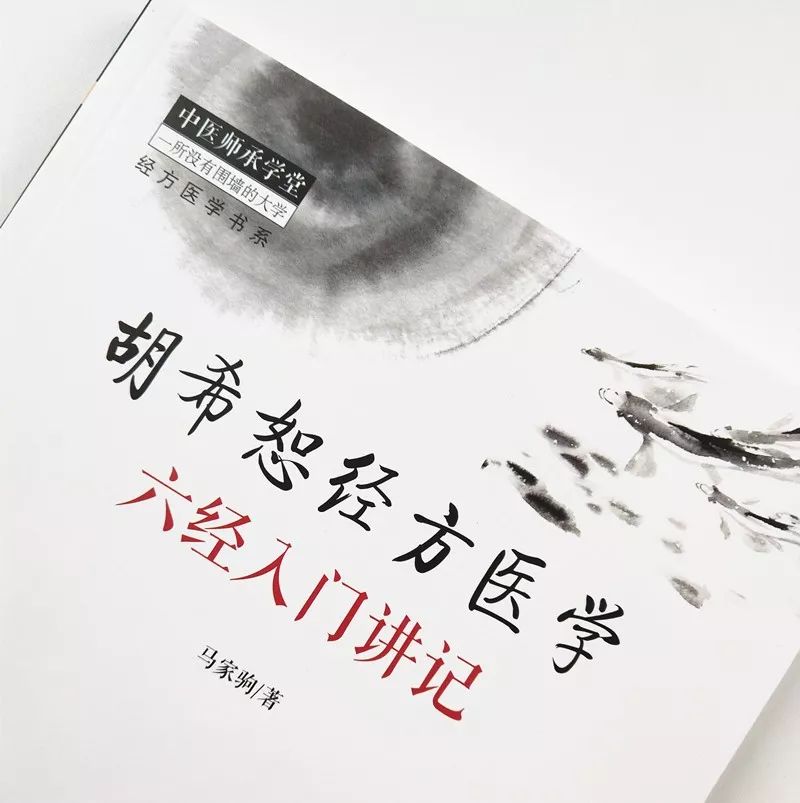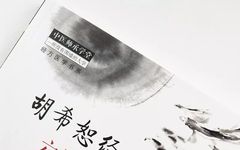
Last week during a clinic visit, an intern asked me how to conduct a diagnosis in clinical practice. This question is very important; how to inquire and collect information through the four examinations reflects your clinical thinking.
Previously, we discussed that the Six Meridians (Liù Jīng) originate from the Eight Principles (Bā Gāng). In clinical practice, one can derive the diagnosis of the Six Meridians through the differentiation of the Eight Principles. Today, we will specifically discuss how to determine the diagnosis of the Six Meridians through the differentiation of the Eight Principles. First, it is essential to clarify the difference between the classical formulas (Jīngfāng) and the medical classics (Yī Jīng) schools.
As early as in the “Book of Han: Arts and Literature”, ancient medicine was divided into the medical classics school and the classical formulas school, where the representative of the medical classics is the “Huangdi Neijing” (Yellow Emperor’s Inner Canon), and the representative of the classical formulas is the “Tangye Jing” (Classic of Decoction) and the “Shanghan Zabing Lun” (Treatise on Cold Damage and Miscellaneous Diseases) from the late Eastern Han dynasty.
In the preface of the Song edition of the “Shanghan Lun”, Lin Yi and others stated: The Jin dynasty’s Huangfu Mi wrote in the preface to the “Jia Yi Zhen Jing” that “Yi Yin, with the talent of the original sage, compiled the ‘Shennong Bencao’ to create the ‘Tangye’. Han’s Zhang Zhongjing discussed the extensive ‘Tangye’, which consists of several volumes, and has been widely verified.” They also said: “Zhongjing’s methods are based on Yi Yin, and Yi Yin’s methods are based on the classics of Shennong.”
In modern times, scholars such as Yang Shaoyi, Qian Chaochen, and Feng Shilun have pointed out through clear verification that in the self-preface of Zhang Zhongjing in the “Shanghan Lun”, the phrase “compiled using ‘Suwen’, ‘Jiuwen’, ‘Bajiu Nuan’, ‘Yin Yang Dalu’, ‘Tailu Yaolu’ and pulse diagnosis, forming the ‘Shanghan Lun’ of sixteen volumes” is a later addition and not written by Zhongjing. Hu Xishu, through a lifetime of practice and research, clearly pointed out that the “Shanghan Lun” belongs to the classical formulas lineage, while the “Neijing” belongs to the medical classics, and the two have different origins. The Six Meridians in the “Shanghan Lun” should not be confused with the Six Meridians in the “Neijing” just because they share the same name.
Just as Traditional Chinese Medicine (TCM) discusses the five organs: heart, liver, spleen, lungs, and kidneys, Western medicine also discusses these organs, but they are entirely different. Therefore, the classical formulas and the “Neijing” theoretical systems are different; one cannot interpret classical formulas using the theories of the “Neijing” but must use the classical formulas theoretical system to interpret the “Shanghan Lun”, using the text of the “Shanghan Lun” to interpret itself, and understanding the Six Meridians through the Eight Principles.
The process of differentiating the Six Meridians is, therefore, the process of differentiating the Eight Principles. The most important aspect of the Eight Principles differentiation is the location and nature of the disease; the location can be exterior, interior, or half-exterior half-interior, while the nature primarily concerns Yin and Yang. Yin and Yang serve as the overarching principles, and sometimes we differentiate cold and heat, deficiency and excess to achieve the understanding of Yin and Yang. In summary, the inquiry must have its own differentiation thought process.
In clinical practice, how to conduct the four examinations, including inquiry, aims to determine the location and nature of the patient’s disease. The order of conducting the four examinations is crucial for differentiating the disease location and nature.
In the “Shanghan Lun”, it is about differentiating certain pulse patterns and treatments. For example, differentiating the Taiyang disease pulse pattern and treatment. Some practitioners propose that pulse diagnosis is key. Pulse diagnosis is indeed very important and is a unique diagnostic method in TCM. For beginners, we advocate for a combination of the four examinations; this does not mean that pulse diagnosis is unimportant, as it is indeed crucial. Through the four examinations, we obtain the information we need, which is the disease location and nature.
Taking pulse diagnosis as an example, there are many works on pulse studies, and opinions vary. For beginners, it is sufficient to be able to determine the basic exterior-interior, cold-heat, and deficiency-excess from pulse diagnosis. By assessing the pulse’s floating and sinking, one can determine the disease location; by evaluating the pulse’s rapidity and slowness, one can determine cold and heat; and by assessing the pulse’s strength, one can differentiate deficiency and excess. In this way, some typical pulse patterns can help us determine the Eight Principles and Six Meridians.
Similarly, tongue diagnosis can also reveal the general exterior-interior, cold-heat, and deficiency-excess conditions, of course, relatively speaking. For example, tongue coating can be white or yellow; generally, white coating is associated with deficiency and cold, while yellow coating is associated with heat and excess. The thickness of the coating can also be differentiated; thin coating often indicates an exterior condition or an early-stage disease, while thick coating often indicates an interior condition or a prolonged illness. Additionally, changes in tongue quality can be assessed, such as pale and red tongues; comparatively, a pale tongue indicates deficiency and cold, while a red tongue often indicates heat and excess. Warm diseases place significant emphasis on tongue diagnosis, and in the differentiation of Wei, Qi, Ying, and Xue, tongue diagnosis occupies a major position.
In summary, both pulse diagnosis and tongue diagnosis can reflect the content of the Eight Principles differentiation. Inquiry may be the most commonly used method in clinical practice. How should one inquire? Some say to focus on the main symptoms; what are the main symptoms? They are symptoms that help determine the exterior-interior, cold-heat, and deficiency-excess conditions, which are the main symptoms.
For example, for a patient with a cold, the “Shanghan Lun” states: “If there is fever and aversion to cold, it is due to Yang; if there is no fever and aversion to cold, it is due to Yin.” Thus, the presence or absence of aversion to cold when there is fever is a main symptom and a key point for diagnosis. Another example is in Article 56: “If the urine is clear, it indicates that the condition is not in the interior but still in the exterior; sweating is necessary.” The clarity of urine is also a main symptom and a key point for differentiation. Furthermore, for externally contracted diseases, the presence or absence of thirst, sore throat, and whether the tongue is red can help determine cold-heat, distinguishing between wind-cold and wind-heat, which are also main symptoms and key points for differentiation.
If one cannot grasp the main symptoms, what should be done? Beginners can completely correspond the typical symptoms of exterior conditions with the patient’s symptoms, focusing on the chief complaint during inquiry. For instance, when encountering a patient with fever, how to differentiate the disease location? One needs to ask the patient if there is aversion to cold, sweating, headache, and whether there is nasal congestion, runny nose, or sneezing. If there are, it indicates the presence of an exterior condition; if not, it indicates the absence of an exterior condition.
By determining whether the patient has the above symptoms, one can judge whether the patient has an exterior condition. Then, differentiate the nature: is the fever due to wind-heat or wind-cold? The same reasoning applies to determining the patient’s cold-heat and deficiency-excess conditions through inquiry. By asking the patient about dryness of the mouth, bitter taste, preference for cold drinks, dryness and pain in the throat, dry stools, and yellow urine, one can assess their cold-heat condition; through observation, one can see if the patient is robust or weak, whether their voice is strong or weak, and whether the pain is tender or sensitive to pressure, as well as whether the pulse is strong or weak, to determine their deficiency-excess condition.
Through deficiency-excess and cold-heat, one can distinguish whether the patient has a Yin or Yang condition. We know that “when evil qi is strong, it is excess; when vital qi is depleted, it is deficiency”. Deficiency and excess are considered from the perspective of the body’s righteous qi, while cold and heat reflect the characteristics of the struggle between righteousness and evil. Deficiency and cold often belong to Yin conditions, while excess and heat often belong to Yang conditions. Yin and Yang can be reflected through the body’s functional hyperactivity and decline. For example, after experiencing evil qi, the struggle between righteousness and evil can manifest as: hyperactivity of body function indicates a Yang condition, such as fever and aversion to cold; if the body’s function declines and is unable to resist evil, it manifests as no fever and aversion to cold, indicating a Yin condition.
As clinical skills improve, the content of our inquiries may become less and less, allowing us to quickly and accurately arrive at a diagnosis.
In clinical practice, the information collected through the four examinations, including our inquiry thought process, will be influenced by clinical thinking, which is affected by the Eight Principles differentiation. The information collected should help us judge the situation of the Eight Principles. Sometimes, through some typical tongue and pulse patterns, we can sufficiently determine the Eight Principles, of course, there are many details that will be gradually explored in the future.
In summary, the process of differentiating the Six Meridians in TCM is the process of differentiating the Eight Principles. We must clearly distinguish the three disease locations: exterior, interior, and half-exterior half-interior, and clarify Yin and Yang, specifically through differentiating cold-heat and deficiency-excess. Yin and Yang serve as the overarching principles; observing color and palpating the pulse should first distinguish Yin and Yang, but this point is often overlooked.
Through the above content, I believe everyone has understood that our clinical thought process is the process of differentiating the Eight Principles. Once the Eight Principles are clearly differentiated, the Six Meridians will also be clearly differentiated. Accurate differentiation lays a solid foundation for our subsequent treatment methods and selection of herbal formulas. As I have repeatedly emphasized, the differentiation of the Eight Principles, Yin and Yang, exterior and interior, cold and heat, deficiency and excess are all binary methods, which are the basic skills of TCM. If the Eight Principles are not clearly differentiated, it only indicates that the basic skills are inadequate, and the subsequent treatment methods and herbal formulas are meaningless.
Author: Ma Jiajun
Affiliation: Beijing Traditional Chinese Medicine Hospital, Capital Medical University
Recommendation: Why does the pulse of a Shaoyin disease being weak and fine indicate a deficiency of Qi, Blood, Yin, and Yang, and why does using Fuzi (Aconite) work?
Previous Article: Hu Xishu as Seen by Japanese Scholar Jiang Biyuan
Click below “Read More” to view Dr. Ma Jiajun’s online audio + text course on TCM

